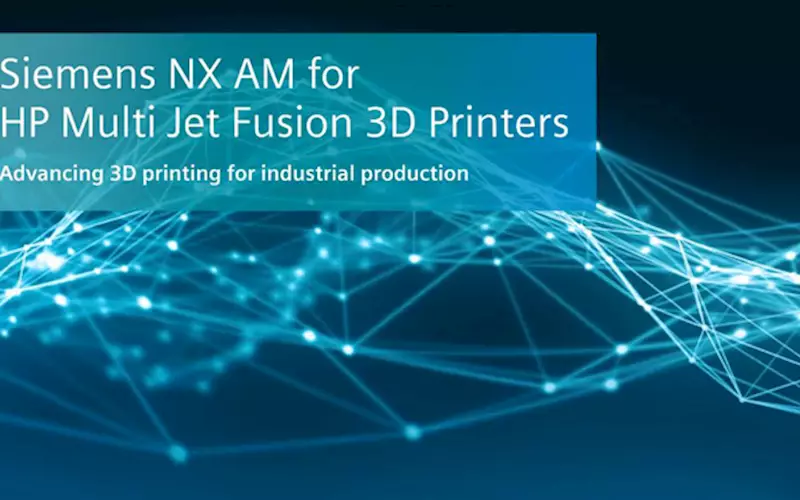HP and Siemens announce 3D printing partnership
In a bid to accelerate 3D printing for industrial production, HP and Siemens have created Additive Manufacturing (AM) software module.
11 Sep 2017 | By Sriraam Selvam
The new software module, Siemens NX AM for HP Multi Jet Fusion (HP’s production-ready commercial 3D printing system), is now available from Siemens PLM Software as an extension to Siemens’ end-to-end design-to-production solution for additive manufacturing.
“HP and Siemens are bringing together the best in design and manufacturing workflow software for the best in 3D printing, unleashing a wave of new product possibilities with the speed, quality, and economics required for the modern digital industrial era,” said Michelle Bockman, global head of 3D printing commercial expansion and development, HP. “We look forward to collaborating with Siemens to continually raise the industry bar on what’s possible for customers with the voxel-level design capabilities of our Multi Jet Fusion 3D printing solutions.”
Siemens’ new software module will enable NX customers to combine design, optimization, simulation, preparation of print jobs, and inspection processes for HP Multi Jet Fusion 3D printed parts in a managed environment.
According to the press release, ‘Users can now load multiple 3D part models into NX, and auto nest and submit them to an HP 3D printer, all in a single environment and with a minimum of steps. The NX and Multi Jet Fusion integration also eliminate the need for data conversion between software applications or process steps and, in the future, is intended to allow unprecedented control, including material characteristics down to the individual voxel-level.’
“At Siemens, we see additive manufacturing as a transformative digital force that is empowering companies to reimagine their products and factories to achieve new levels of business performance,” said Zvi Feuer, senior vice president of manufacturing engineering software, Siemens PLM software. “Deepening our partnership with HP and driving their innovative 3D printing technology is especially important as companies look to increase speed to market, differentiate on product performance, simplify production and supply chain operations, and implement new business models. As products become more complex and individualized, we look forward to the next frontier of 3D printed parts with multiple materials, tunable mechanical properties and integrated electronics.”











 See All
See All